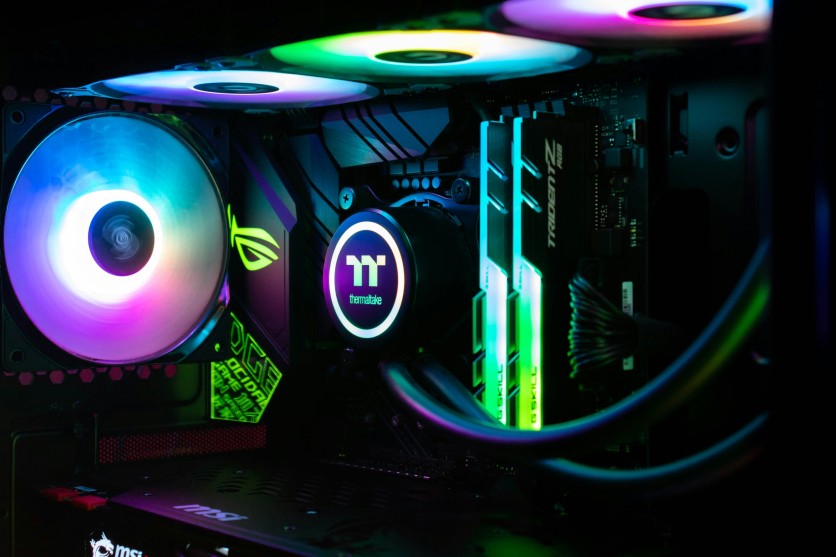RGB lighting has become an essential element in modern gaming PCs, transforming standard builds into visually striking setups. From vibrant LED strips to color-synchronized fans, RGB components not only add flair but also allow gamers to express their personalities and gaming style. A thoughtfully executed RGB setup can highlight your build, complement your desk, and enhance the overall gaming aesthetics of your environment.
However, simply installing RGB hardware is not enough. A proper PC lighting guide helps ensure your RGB components are installed optimally and configured correctly, avoiding common pitfalls like uneven lighting, unresponsive LEDs, or clashing colors. By understanding both installation and software customization, you can achieve a seamless, immersive visual experience that elevates your gaming setup.
Step-by-Step Guide to Installing RGB Lighting in Your Gaming PC
Installing RGB lighting is a combination of selecting the right components, positioning them effectively, and connecting them properly. Here's a step-by-step approach:
1. Choosing RGB Components
- LED Strips: Flexible strips can be placed along case edges, behind the motherboard tray, or around fans for ambient lighting.
- RGB Fans: These provide both cooling and illumination. RGB fans can be set to specific colors or patterns for a synchronized look.
- Decorative Components: RGB RAM modules, GPU lighting, and LED case logos enhance the overall aesthetic without adding clutter.
2. Placement Strategies for Optimal Effect
- Intake and Exhaust Fans: Position RGB fans to highlight airflow paths. Fans at the front, top, and rear not only provide cooling but also add dynamic lighting.
- Case Edges and Panels: Place LED strips along top, bottom, or side panels for smooth glow effects. Avoid direct placement near dark corners to prevent shadows.
- Cable Management: Hide RGB cables behind the motherboard tray or along cable channels to maintain a clean look while preventing interference with airflow.
3. Connecting RGB Cables
- Motherboard Headers: Most modern motherboards have dedicated 4-pin or 3-pin RGB headers for synchronizing lighting. Connect fans and strips to these headers for software control.
- Standalone Controllers: Some RGB components come with proprietary controllers. These allow manual adjustments if your motherboard lacks sufficient headers.
- Power Considerations: Ensure the RGB system doesn't overload your PSU or motherboard headers. Check the wattage and follow manufacturer guidelines.
Following these steps ensures that your RGB setup looks cohesive and functions reliably.
Configuring and Customizing RGB Lighting for Maximum Impact
Once installed, configuring RGB lighting allows you to fully exploit your gaming aesthetics. Software plays a crucial role in adjusting color, patterns, and synchronization across devices.
1. Popular RGB Control Software
- ASUS Aura Sync: Provides synchronized lighting for ASUS motherboards, GPUs, RAM, and peripherals. Allows pattern creation and temperature-based color changes.
- MSI Mystic Light: Controls RGB components on MSI-compatible hardware, offering preset effects or custom gradients.
- Gigabyte RGB Fusion: Manages Gigabyte motherboards and connected devices with customizable color zones and animations.
2. Customizing Colors and Patterns
- Choose colors that match your gaming setup or desk theme. Cool tones like blue or purple are soothing for long sessions, while reds and oranges create energy.
- Sync LEDs with CPU temperature, GPU usage, or music to add dynamic effects and monitor system activity visually.
- Adjust brightness and speed to avoid over-illumination, which can cause eye strain or distractions.
3. Troubleshooting Common Issues
- Unresponsive LEDs: Check connections, ensure software recognizes the device, and update firmware if needed.
- Color Mismatches: Verify that all RGB components use compatible protocols (e.g., 3-pin ARGB vs. 4-pin RGB).
- Software Conflicts: Only one RGB management program should control devices at a time to prevent glitches.
By carefully configuring software, your PC lighting ensures that all components work harmoniously, creating a polished and immersive setup.
Additional Tips for Stunning RGB Gaming Aesthetics
To elevate your RGB setup further, consider these additional strategies:
- Layering Effects: Combine LED strips, fans, and RAM lighting for multi-dimensional illumination.
- Accent Colors: Use complementary or contrasting colors for accent zones, such as highlighting your GPU or motherboard area.
- Peripherals Integration: Sync RGB keyboards, mice, and mousepads to extend the aesthetic beyond the case.
- Routine Maintenance: Clean dust off LED surfaces and fans regularly to maintain brightness and prevent color distortion.
These additional touches ensure your gaming PC is visually cohesive and highlights your personal style.
Conclusion
A well-planned RGB setup transforms a standard PC into a visually stunning centerpiece. By carefully selecting components, following a detailed PC lighting guide, and customizing effects with software, gamers can enhance their gaming aesthetics while adding functional cues like temperature or system activity indicators.
Experimenting with colors, syncing LEDs with peripherals, and layering lighting effects allows you to personalize your gaming environment and create an immersive, enjoyable experience. Proper installation and thoughtful configuration ensure your RGB components shine without affecting performance, making your gaming setup not just functional, but visually spectacular.
Frequently Asked Questions
1. Can I mix different brands of RGB components?
Yes, but ensure that they are compatible with your motherboard's RGB headers or that the software you use supports multiple brands. Some software, like OpenRGB, can unify devices from different manufacturers.
2. How do I prevent RGB lighting from affecting system performance?
RGB lighting is generally low-power, but excessive effects may impact system stability if controllers or software are misconfigured. Use motherboard headers and controllers within recommended power limits.
3. What are the best colors for reducing eye strain during gaming?
Cool tones like blue, purple, or soft white are gentler on the eyes than bright reds or yellows. Adjust brightness to match your room lighting.
4. Can RGB lighting sync with in-game events?
Yes, some advanced software and peripherals support reactive lighting tied to games, music, or system performance for a fully immersive experience.
ⓒ 2025 TECHTIMES.com All rights reserved. Do not reproduce without permission.





